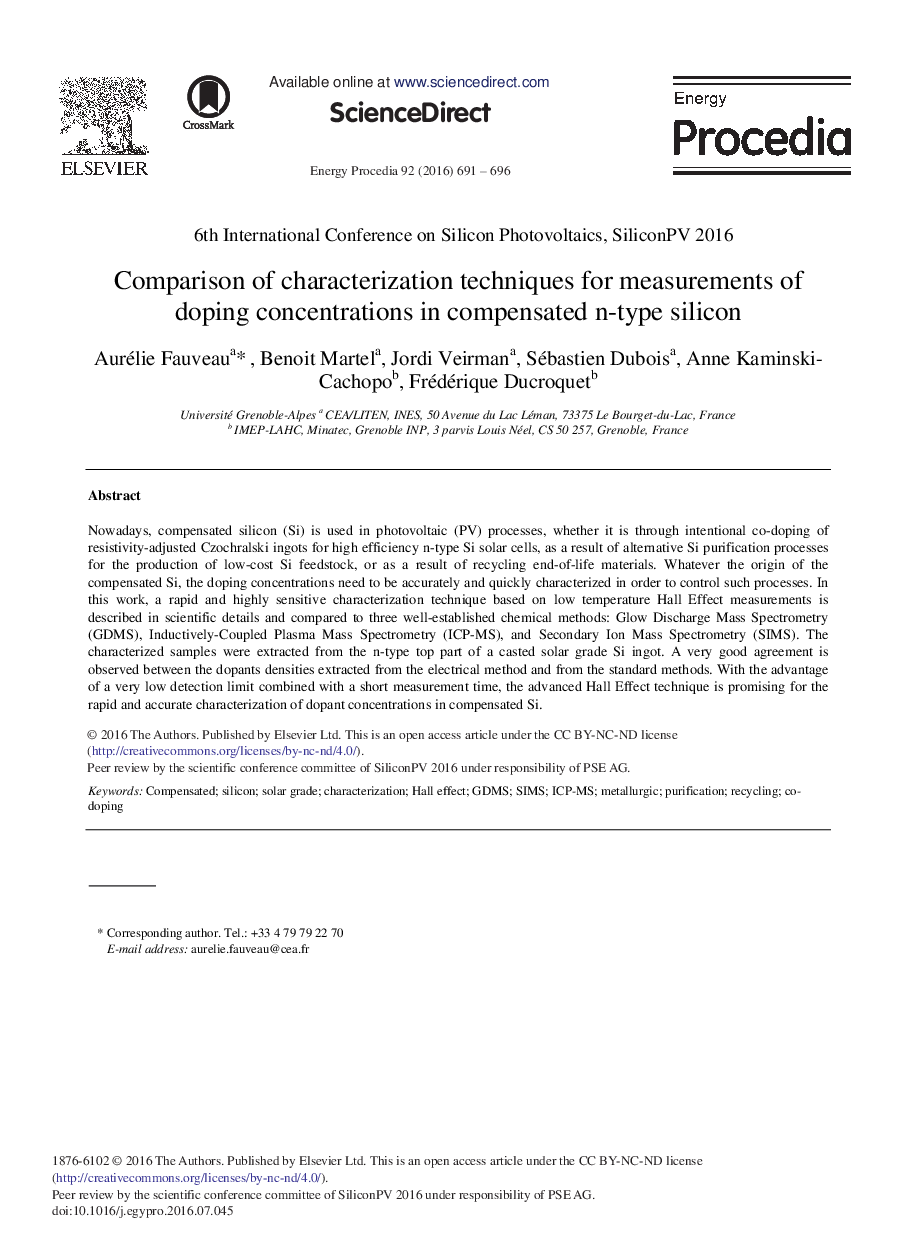| Article ID | Journal | Published Year | Pages | File Type |
|---|---|---|---|---|
| 5446646 | Energy Procedia | 2016 | 6 Pages |
Abstract
Nowadays, compensated silicon (Si) is used in photovoltaic (PV) processes, whether it is through intentional co-doping of resistivity-adjusted Czochralski ingots for high efficiency n-type Si solar cells, as a result of alternative Si purification processes for the production of low-cost Si feedstock, or as a result of recycling end-of-life materials. Whatever the origin of the compensated Si, the doping concentrations need to be accurately and quickly characterized in order to control such processes. In this work, a rapid and highly sensitive characterization technique based on low temperature Hall Effect measurements is described in scientific details and compared to three well-established chemical methods: Glow Discharge Mass Spectrometry (GDMS), Inductively-Coupled Plasma Mass Spectrometry (ICP-MS), and Secondary Ion Mass Spectrometry (SIMS). The characterized samples were extracted from the n-type top part of a casted solar grade Si ingot. A very good agreement is observed between the dopants densities extracted from the electrical method and from the standard methods. With the advantage of a very low detection limit combined with a short measurement time, the advanced Hall Effect technique is promising for the rapid and accurate characterization of dopant concentrations in compensated Si.
Related Topics
Physical Sciences and Engineering
Energy
Energy (General)
Authors
Aurélie Fauveau, Benoit Martel, Jordi Veirman, Sébastien Dubois, Anne Kaminski-Cachopo, Frédérique Ducroquet,
